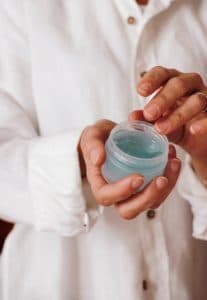Slugging, Is it for you?
- Posted on: Jun 1 2022
Should Your Skincare Routine Include Slugging?
Soft, hydrated skin can make you look younger and healthier, according to experts. A big beauty trend that promotes subtle skin is slugging. On TikTok alone, the hashtag #slugging has been viewed more than 200 million times. The trend comes from South Korea and is popular on the K-Pop scene. But what exactly is slugging and is it actually good for your skin ? We consulted writer and beautician, Jennifer Wiley, for the latest.
What is slugging?
Thankfully, no slugs are involved in the slugging process. Instead, petroleum jelly (usually Vaseline or similar) is put all over the face. This works as a barrier to lock in moisture and hydrate the skin. Slugging should always be done at night as your skin works to repair itself mostly while you sleep. How often you slug depends on your skin’s needs, your skin type, and the time of year. 60% of Americans say they battle ‘winter skin syndrome’ in the winter. Excessive dryness, tightness, and itching are symptoms. Slugging regularly during this period can be beneficial as it will restore moisture and improve comfortability. After your normal evening skincare routine, apply a thin layer of Vaseline to the skin on your face. Simply use a cleanser the next morning and you’re good to go.
Skin benefits
One benefit of slugging is that it can make you appear younger. Dewy as if you had just sprayed on Evian water is a look many young people are going for. Slugging prevents your skin from drying out. When the skin is dry, fine lines and wrinkles appear, and it’s these that age you. Another benefit of slugging is that it’s a quick and easy way to moisturize your skin. It’s recommended that you moisturize twice per day, but just 54% of 18 to 29-year-olds do this. Perhaps the biggest advantage of slugging is that Vaseline is an occlusive product. This means it gives your skin a protective seal. On a daily basis, skin is subjected to the elements, pollution particles, and irritants, but slugging can stop these things from damaging your skin.
The risks
If you have oily skin, it’s best to stay from slugging. Petroleum is such a tough skin barrier that it will stop the oils in your skin from escaping. Pore blockages and irritation of the hair follicles are likely and you may end up with a breakout. If you already have acne you should give slugging a miss too. Using products that act as an occlusive will trap anything that’s on your face, so spots are an inevitable outcome. You must also avoid exfoliating before slugging as it will open your pores up, leaving them more vulnerable to blockages. Another risk is that you become too reliant on slugging. There’s only so much Vaseline your skin will be able to deal with and if you start slugging too frequently, your skin could find it hard to know what to do with it. The possible outcomes of this are enlarged pores, pimples, and whiteheads.
When to avoid slugging
Many skin conditions can be made worse by slugging. For example, if you have rosacea you could irritate the skin further and cause redness. You also don’t want to try slugging when you have an infectious skin condition such as impetigo. While Vaseline may provide some temporary relief from the itching, it’s likely to spread the condition to other parts of the face and body. There are risks when combining with glycolic or salicylic acid and increasing their potency to unwanted levels. The same would hold for retinoid products like Retin-A or Diffiren gel.
There can be some benefits in slugging occasionally. Although, it’s best to try it on small patches of dry skin before slathering it all over your face. It’s important to slug with caution as it can cause irritation and the effects should be closely monitored.
Photo by Nati Melnychuk on Unsplash
Posted in: Uncategorized

 Same-day Appt
Same-day Appt 212.962.1115
212.962.1115 
